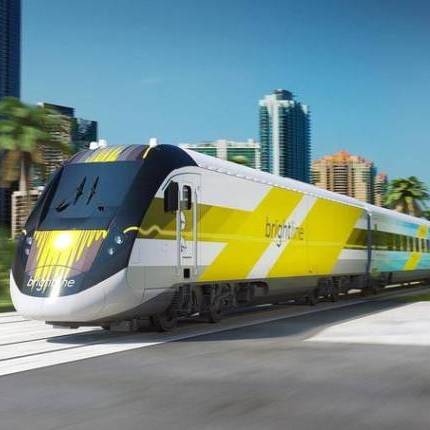 Michael Reininger, president of the soon-to-be-launched Brightline rail service, will need thousands of passengers a day to buy tickets to ride his shiny new trains from Miami to Orlando.
Michael Reininger, president of the soon-to-be-launched Brightline rail service, will need thousands of passengers a day to buy tickets to ride his shiny new trains from Miami to Orlando.
Where will he find them?
Reininger sees a lucrative market in car-averse millennials and aging baby boomers, two massive population groups with no track record of train travel.
Millennials, those born from 1982 to 2000, are thought to be less enamored of automobiles than their parents. And early boomers and older Floridians might be at an age where they’re willing to let someone else handle the driving on Florida’s congested roads.
“When you think about the Florida marketplace, it is a very young and a slightly older marketplace,” Reininger said last week during a tour of the factory where Brightline’s trains are being built.
Boomers, with their household fleets, big garages and long commutes, hastened the demise of train travel and ushered in what Reininger calls “the monopoly of the car.” “That’s a very strong monopoly,” Reininger said. Still, he looks to demographic trends as proof that a last-century mode of transport can thrive in an age of Uber and Lyft and self-driving cars.

Reininger jokes that in his day, every teen lined up to apply for a driver’s license “15 minutes before their 16th birthday.” Today, he says, millennials are opting out of car ownership altogether. Skeptics aren’t sure that the sociological trends are compelling enough to merit Brightline‘s $3 billion investment in trains and tracks. “If they’re relying on that, they’re definitely going to lose a lot of money,” said Randal O’Toole, a transit analyst at the Cato Institute.
For most Floridians, passenger trains are a novelty — settings for old movies or a way to get around Europe or big cities like New York, Chicago and Washington. Aging Americans cling to their car keys as long as they possibly can, O’Toole notes. And millennials don’t really hate cars, he argues. They just came of age during an economic period when they lacked the resources or the need to drive.
“It’s pretty clear that the decline in per capita driving was due to the financial crisis,” O’Toole said. “It had nothing to do with changing preferences.”
Ticket prices will play a role in Brightline‘s passenger counts, and Reininger has yet to reveal how much it will cost to ride the trains. By one estimate, ticket prices are slated to start at $11 for a one-way trip between Miami and Fort Lauderdale. The highest fare would be $143 for a one-way business-class ticket from Miami to Orlando.
Brightline, the name by which the All Aboard Florida trains will operate under, is owned by Fortress Investment Group (NYSE: FIG). It plans to begin service from Miami to West Palm Beach in mid-2017, with service to Orlando International Airport to start later.
All Aboard Florida officials have said there will be connections for riders to “seamlessly” move from the stations to their ultimate destination. Transfer options will include public trolleys, buses, ride-sharing and rental cars. The company has said it chose the locations of its stations in Miami, Fort Lauderdale, West Palm Beach and Orlando precisely to maximize connections with other forms of transportation.
And just last month, the company garnered the last of seven commitments from government agencies to pay for a pivotal Tri-Rail stop at its station in downtown Miami. That allows All Aboard to continue with construction of a platform at its Miami station to accommodate Tri-Rail service.
Tri-Rail now runs between Palm Beach County and the Miami International Airport. The downtown Miami Tri-Rail stop at All Aboard‘s station would give Palm Beach County residents easier access to the American Airlines Arena, where The Miami Heat play, Port Miami, and other nearby businesses and shopping districts, officials said.
Reininger said this week he specifically sees the rise of Uber as a benefit for his trains. The ride-sharing service has created a way to travel short distances that’s cheaper than taxis and faster than buses. “When we first started this business, Uber didn’t exist. Now, it’s a verb,” Reininger said.
But for Brightline‘s business model, O’Toole sees Uber as more foe than friend. With Uber and Lyft planning to unveil fleets of self-driving cars, he doubts that a Palm Beach County resident would take an Uber to the Brightline station in downtown West Palm Beach, ride the train to Orlando International Airport and then hire another Uber vehicle to his final destination. “As long as you’re in the self-driving Uber,” he asks, “why don’t you just take it all the way?”
Source: Mass Transit

